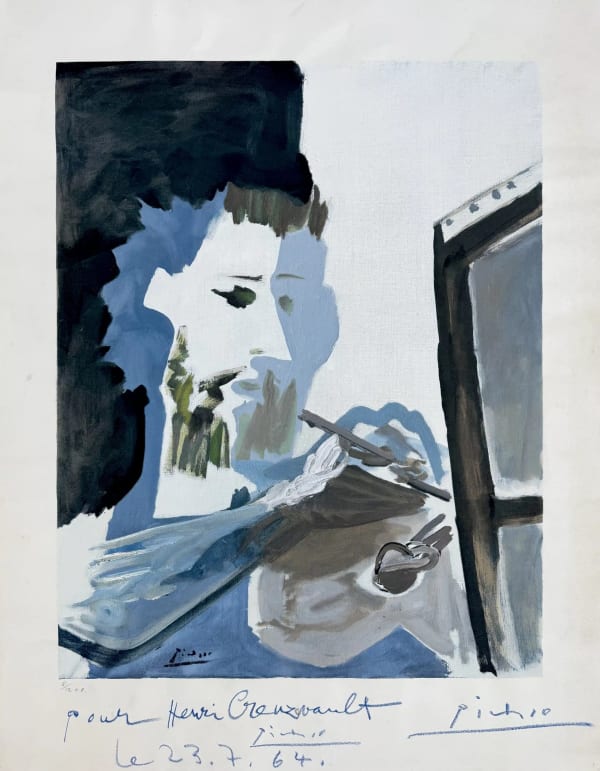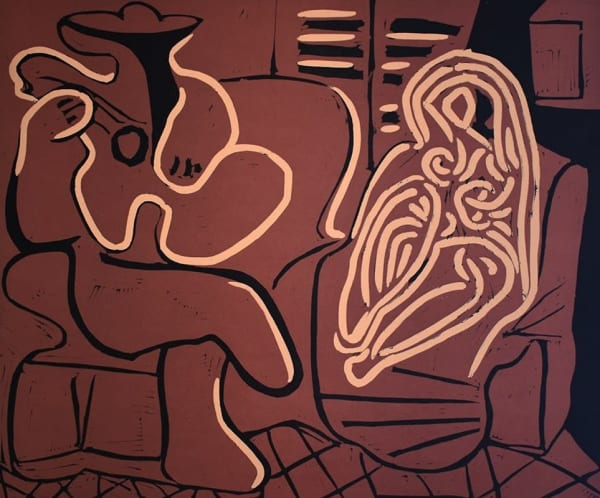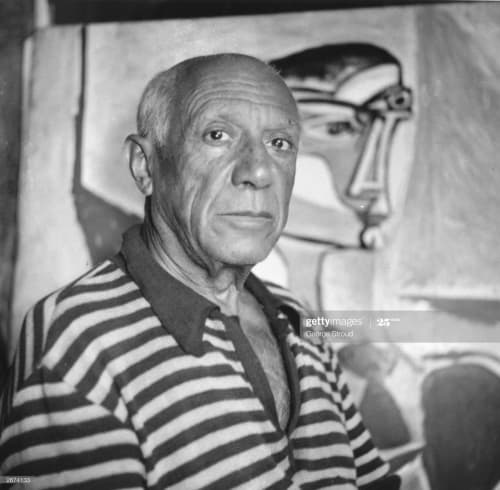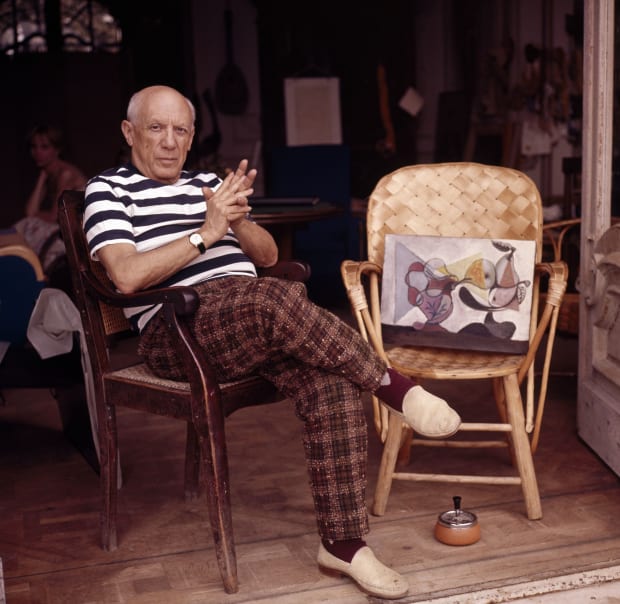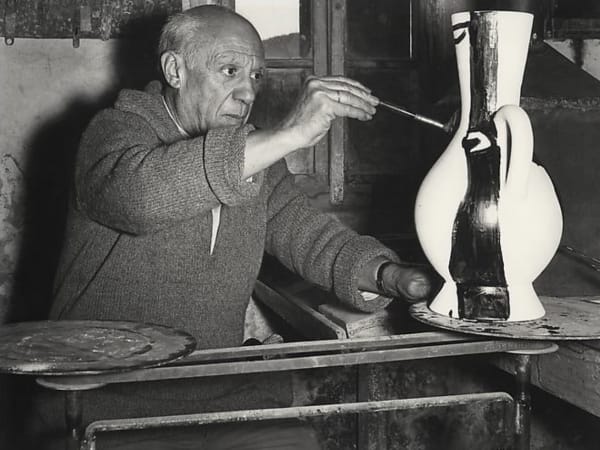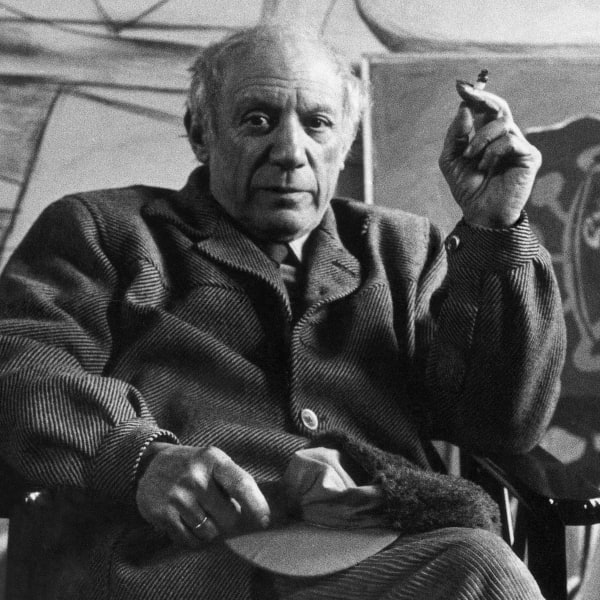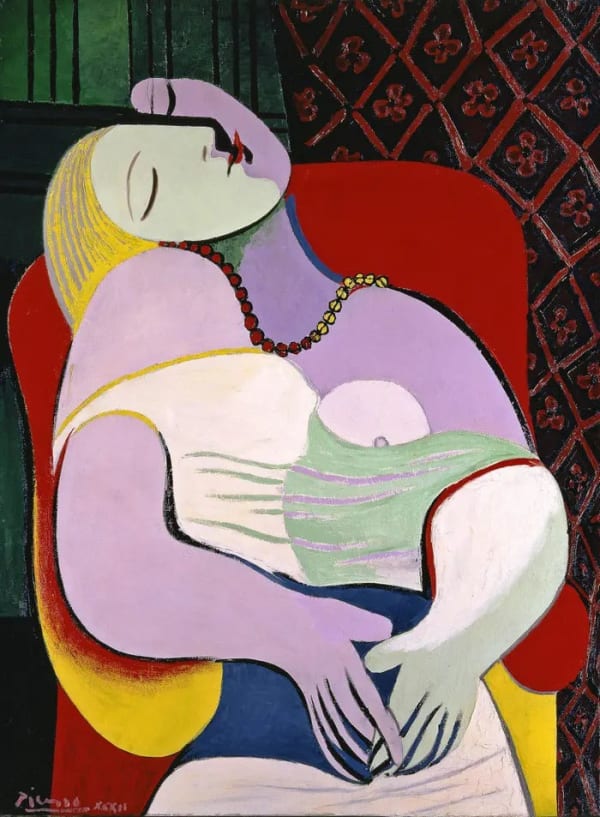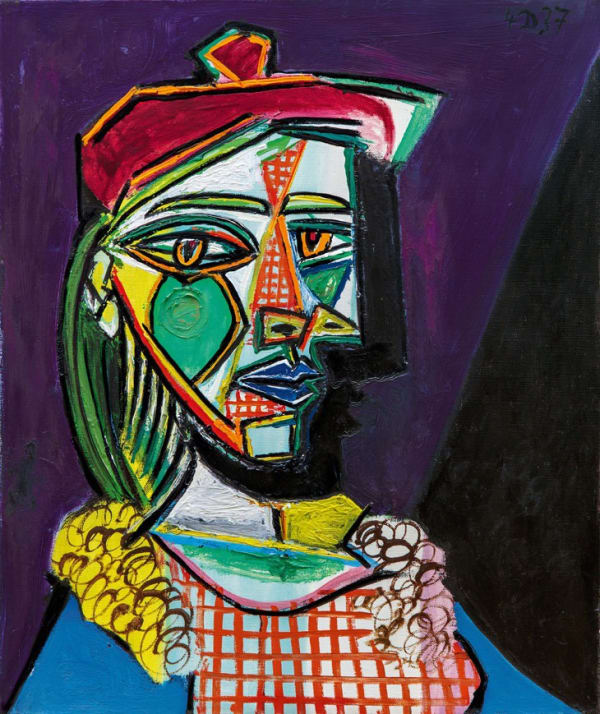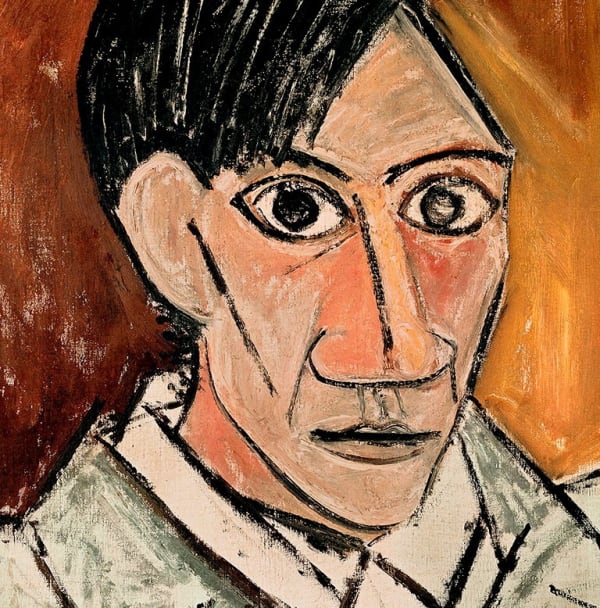-
Pablo Picasso Prints For Sale
Pablo Picasso's art reshaped the very notion of art itself through his groundbreaking exploration of form, color and shape which, decades after the artist's passing, still looks as revolutionary today as upon its creation. His iconic approach to form and line across his work witnesses the artist explore the very nature of the indelible creativity of the human spirit. Explore our latest Pablo Picasso art for sale at Guy Hepner, Picasso dealers since 2010.
Discover authentic Picasso lithocuts, prints and ceramics for sale below.
-
Original Picasso Signed Aquatints, Etchings and Lithographs For Sale
-
Series

Pablo Picasso
Tasse et bananes, 1908Oil on panel
Signed on the reverse, Picasso10 5/8 x 8 3/8 in
27 x 21.3 cmSeries: PaintingCopyright The ArtistTasse et Bananes (Cup and Bananas) is a deceptively simple still life by Pablo Picasso, created in 1908 at a key transitional moment in his artistic development. Painted in oil...Tasse et Bananes (Cup and Bananas) is a deceptively simple still life by Pablo Picasso, created in 1908 at a key transitional moment in his artistic development. Painted in oil on panel, the work bridges his Post-Impressionist explorations and the radical innovations of early Cubism. Though modest in scale and subject—depicting a cup flanked by two pieces of fruit—the painting is rich in tonal depth, spatial ambiguity, and formal experimentation, revealing Picasso’s deep engagement with the legacy of Cézanne and his growing interest in abstraction.
At first glance, Tasse et Bananes is restrained in palette and composition. A subdued range of ochres, browns, greys, and muted greens define the picture’s atmosphere. The scene is composed of a single white cup, rendered with subtle modulation of light and shadow, resting on a flat surface with two rounded, organic forms that appear to be bananas or perhaps unripe fruit. Behind the central forms, the backdrop is made up of broad, gestural strokes, abstracting the space into overlapping planes of warm brown.
The brushwork is visible and deliberate. The objects are outlined with soft, earthy transitions, lacking the clean contours of earlier academic still life. The cup’s form is geometric yet softened, sitting slightly off-center, which subtly disrupts the traditional compositional symmetry of still life painting. The fruit—partially obscured—blends into the surrounding space, emphasizing volume through tonal contrast rather than linear perspective.
There’s a quiet tension between solidity and dissolution. The cup and fruit do not sit comfortably on a table as in traditional still life; instead, they float within a shallow, indeterminate space. This ambiguity is key to understanding Picasso’s experimentation with pictorial depth and perspective at the time.
1908 was a critical year in Picasso’s development. It marks the threshold between the structured, volumetric works inspired by Paul Cézanne and the analytical rigor of early Cubism, which Picasso would begin to fully develop in the years that followed. Tasse et Bananes reflects this intermediary stage, where objects are still recognizable, yet abstracted through form, colour, and space.
The influence of Cézanne is palpable—not only in the subject matter of fruit and domestic objects, but in the way Picasso dismantles traditional perspective and flattens space into intersecting planes. The emphasis on volume and geometry, especially in the cup’s base and the play of horizontal bands in the background, anticipates the fractured logic of Cubism. While the painting does not exhibit the full deconstruction of form that would define Les Demoiselles d’Avignon (1907) or Houses on the Hill, Horta de Ebro (1909), it clearly reveals Picasso’s growing fascination with structure over illusion.
Moreover, the limited palette and earthy tones foreshadow the ochres and muted greys of the early Cubist palette, which would dominate his work from 1909 to 1912.
Tasse et Bananes is more than a simple still life—it is a meditative exercise in form, weight, and space. In this work, Picasso strips away decorative excess to focus on the underlying structure of things. It reflects his move away from representation toward abstraction, not through radical rupture, but through quiet, persistent experimentation. The painting stands as an important marker on the path to Cubism and a testament to Picasso’s genius in rethinking even the humblest of subjects—a cup and fruit—as the building blocks of modern visual language.
For more information, contact our galleries via the inquiry form below.
Overview"Prints are like a diary of my artistic journey."
Discover authentic and rare Picasso linocuts, prints and ceramics for sale at Guy Hepner New York & London.
Pablo Picasso (1881–1973) is one of the most influential artists of the 20th century. As a co-founder of Cubism and a pioneer of modern art, Picasso's legacy spans multiple disciplines—painting, sculpture, drawing, printmaking, and ceramics. Few artists matched his innovation or productivity.
In 1958, at the age of 77, Picasso relocated to the South of France with Jacqueline Roque. No longer working from his Paris studio, he discovered a local printer and began exploring linocut printing—a bold, graphic technique that involves carving designs into linoleum blocks.
Over the next five years, he created more than 100 linocuts, many of which are now considered essential examples of mid-century modern printmaking. The most collectable works include: Portrait of a Woman after Cranach the Younger (1958), Portrait of a Woman in a Hat* (1962) and Still Life with Glass Under the Lamp (1962) which are considered standout examples of Picasso’s linocut and printmaking technique.
Alongside his printmaking, Picasso immersed himself in the world of ceramic, working with the Madoura Pottery studio in Vallauris, he produced over 3,500 ceramic works starting in the mid-1940s. Picasso ceramics range from playful plates and jugs to complex sculptural forms. These works often feature animals, faces, and mythological symbols, executed in a signature style that is unmistakably Picasso.
Today, collectors are increasingly drawn to Picasso ceramics for their charm, provenance, and investment potential. Whether you're looking for editioned ceramics or unique studio pieces, Picasso's ceramic works offer a tangible connection to his genius.
Guy Hepner offer a curated selection of authentic Picasso linocuts for sale and Picasso ceramics for sale, complete with provenance and authentication documents. Whether you're looking for a standout linocut or a rare ceramic piece from Madoura, our experienced team is here to help you find the perfect Picasso addition to your collection.
For more information on Picasso prints for sale or to buy Picasso ceramics, contact our galleries via info@guyhepner.com. News
News-

2025 In Review: Picasso, Warhol, Basquiat, Haring.
Game Changers December 16, 2025In 2025, the markets for Pablo Picasso , Andy Warhol , Jean-Michel Basquiat , and Keith Haring remain not only resilient, but structurally essential to...Read more -

Pablo Picasso: Reinventing Portraits
Radical Lines. November 17, 2025Portraiture has served as one of its most stable and recognisable genres. From the idealised heads of Renaissance nobility to the psychological interiors crafted by...Read more -

Collecting Picasso Ceramics
A Global Market Report October 20, 2025Picasso's ceramics have evolved from a niche collecting category into a vibrant global market. Collectors worldwide are increasingly drawn to these works, which range from...Read more -

Top Performing Artists at Auction (2000–2025) A Guide
The Most Popular Artists at Auction and In the Global Art Market 2025 11/11/2025What Makes an Artist “Top Performing” From 2000 to 2025, the global art market has seen booms, corrections, and transformations. Throughout it all, certain artists...Read more -

Pablo Picasso: Market Performance 2005–2025
A Collector's Deep Dive September 8, 2025From 2005 to 2025, Picasso remained a bellwether of the global art market—highly liquid across price bands, with periodic record-setting trophies at the top and...Read more -

Picasso and the Reinvention of Art
How the Past Shaped a New Visual Language August 6, 2025Pablo Picasso’s name is virtually synonymous with modern art, but his genius didn’t come from a rejection of tradition. Quite the opposite: he absorbed the...Read more -

Why Picasso Still Matters
Understanding His Impact on Art and Culture August 6, 2025Few artists have reshaped the trajectory of modern art like Pablo Picasso. A name synonymous with innovation, rebellion, and sheer creative force, Picasso remains a...Read more -

Guide To Collecting Pablo Picasso
Where To Start? May 20, 2025Pablo Picasso is often hailed as the most influential artist of the 20th century, not only for his pioneering of Cubism but also for his...Read more -

Picasso Market Report
May 2025 May 20, 2025In the ever-evolving world of art investment, blue-chip artists like Pablo Picasso continue to offer a rare combination of cultural prestige and market resilience. In...Read more







